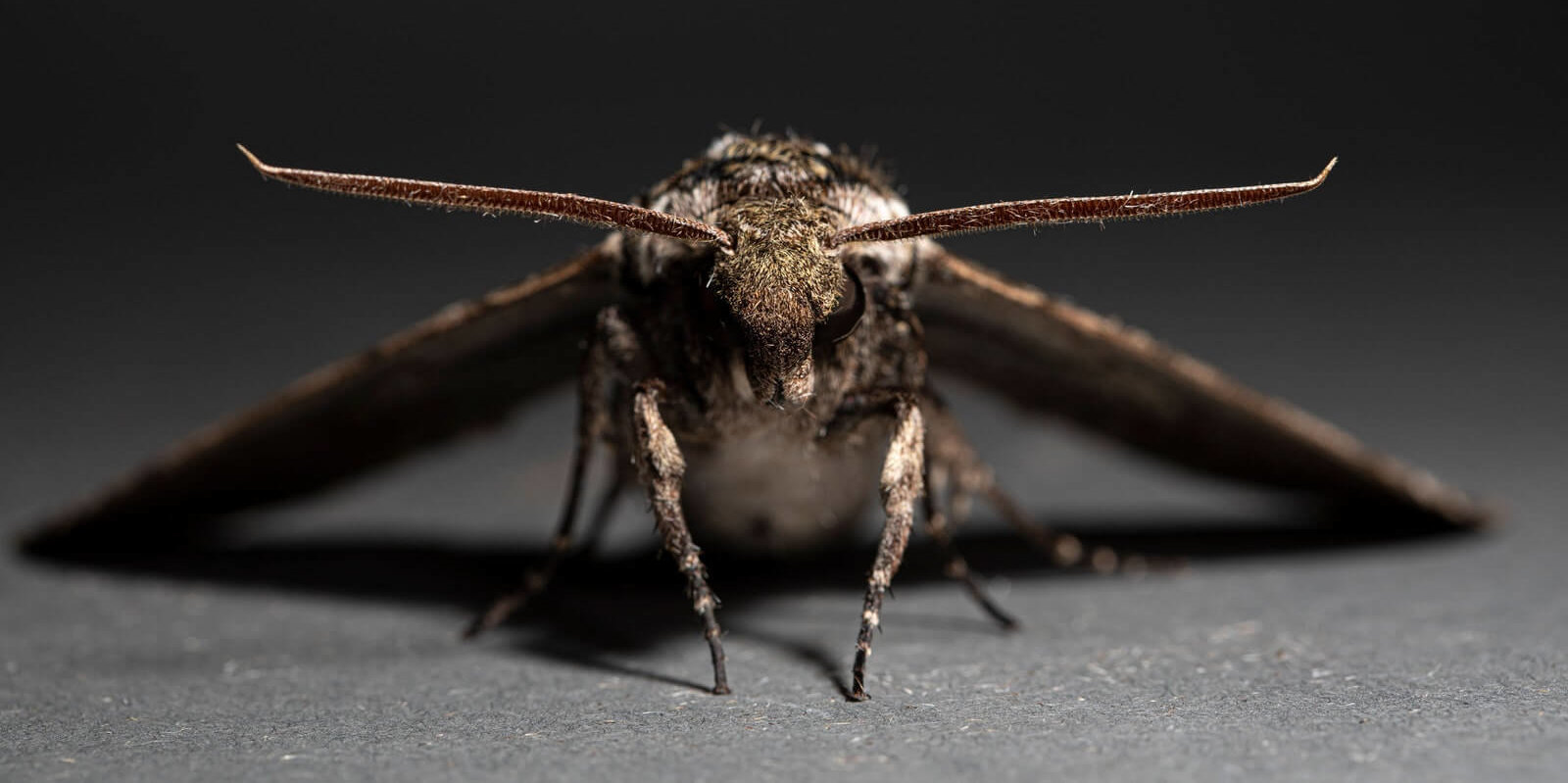A team led by the University of Washington has recently developed “a bio-hybrid odor-guided autonomous palm-sized air vehicle” that uses an antenna from an actual moth, making it the first Cyborg Moth Smellicopter.
The results of the research concerning the autonomous drone were published on October 1 in IOP Bioinspiration & Biomimetics, a peer-reviewed journal that publishes research revolving around the principles and functions found in biological systems developed through evolution.
The Smellicopter, as it is named, uses the antenna of the Manduca sexta, otherwise known as the Carolina sphinx moth or the tobacco hawk moth, in order to detect smells and navigate towards them.
“Nature really blows our human-made odor sensors out of the water,” said Melanie Anderson, a mechanical engineering student from the University of Washington and lead author of the doctoral research.
“By using an actual moth antenna with Smellicopter, we’re able to get the best of both worlds: the sensitivity of a biological organism on a robotic platform where we can control its motion.”
Anderson started the process by cold-anesthetizing a hawk moth inside a freezer so the antennae could be removed. The ends of the antenna were then cut and a wire attached to both ends so they could be connected to an electrical circuit.
“A lot like a heart monitor, which measures the electrical voltage that is produced by the heart when it beats, we measure the electrical signal produced by the antenna when it smells an odor,” explained Anderson. “And very similarly, the antenna will produce these spike-shaped pulses in response to patches of odor.”
Smell is an essential sense for moths and one on which they rely heavily.
Furthermore, moths lack a “nose“, so instead, they use their antennae to scan for the smell of flowers or potential mates.
“Cells in a moth antenna amplify chemical signals,” stated Thomas Daniel, a University of Washington professor of biology and co-author of the paper. “The moths do it really efficiently — one scent molecule can trigger lots of cellular responses, and that’s the trick. This process is super efficient, specific, and fast.”
The drone is also equipped with laser sensors that allow it to detect and avoid obstacles while flying. For example, if the drone’s infrared sensors pick up an obstacle within 20 cm, then the Smellicopter will change direction to avoid colliding with it. It is also programmed according to an algorithm that mimics the way moths search for smells that are of interest to them and even acting like a real moth would in something called crosswind casting, where the moth systematically scans horizontal and vertical air space for a presumably upwind source they are targeting.
In this case, the drone starts off by drifting to the left for a set distance and if it doesn’t detect a strong enough scent, it will proceed to move to the right. So when the smell is finally detected, the drone adjusts direction and flies towards the source. Likewise, this also applies in case there is a certain obstacle blocking the odor.
“So if Smellicopter was casting left and now there’s an obstacle on the left, it’ll switch to casting right,” says Anderson. “And if Smellicopter smells an odor but there’s an obstacle in front of it, it’s going to continue casting left or right until it’s able to surge forward when there’s not an obstacle in its path.”
“From a robotics perspective, this is genius,” said co-author and co-advisor Sawyer Fuller, an assistant professor of mechanical engineering at the University of Washington. “The classic approach in robotics is to add more sensors, and maybe build a fancy algorithm or use machine learning to estimate wind direction. It turns out, all you need is to add a fin.”
There are downsides as well. Even though the detached moth antenna can live for up to almost four hours, the drone itself has a battery life of even less than that: a mere 10 minutes on a charge, making it impossible for longer field operations.
But despite this, the researchers are being optimistic in regards to future uses. So far the Smellicopter has managed to successfully reach the source of a smell in 100% of the cases and not only that, but the device can detect potentially dangerous chemicals in the air especially in circumstances where humans are not sensitive or fast enough to locate specific smells.
Overall, this makes the cyborg drones ideal for cases where the devices are required to easily navigate areas that are deemed too small, dangerous, or insecure for humans, such as unstable buildings, zones where explosives might be present, or structures damaged by natural disasters.
Follow TechTheLead on Google News to get the news first.























